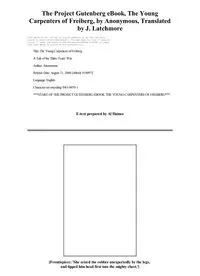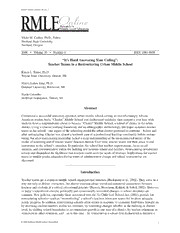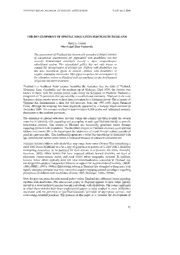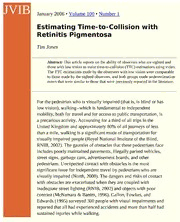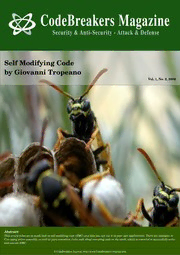
CodeBreakers Magazine: Vol. 1, No. 2: "Self Modifying Code" PDF
Preview CodeBreakers Magazine: Vol. 1, No. 2: "Self Modifying Code"
CodeBreakers Magazine – Vol. 1, No. 2, 2006 Self Modifying Code by Giovanni Tropeano Vol. 1, No. 2, 2006 Abstract: This article takes an in depth look at self modifying code (SMC) and how you can use it in your own applications. There are examples in C++ using inline assembly, as well as pure assembler. I also talk about executing code on the stack, which is essential to successfully write and execute SMC. © CodeBreakers Journal, http://www.CodeBreakersJournal.com CodeBreakers Magazine – Vol. 1, No. 2, 2006 Self Modifying Code 3 Windows Memory - How it's put together By Giovanni Tropeano Creating SMC in Windows isn't as straight forward as I would of hoped. You're going to have to deal with a few quirks and kinks that Windows will throw your way. This article takes an in depth look at self modifying code Why? 'Cause it's Microsoft. (SMC) and how you can use it in your own applications. As you probably already know, Windows allocated 4 Gigs There are examples in C++ using inline assembly, as of virtual memory for a process. To address this memory, well as pure assembler. I also talk about executing code Windows uses two selectors. One is loaded in the CS on the stack, which is essential to successfully write and Segment register, and the other one is thrown into the execute SMC. DS, SS, and ES registers. They all use the same base address of memory (equal to zero) and have the same limits of 4 Gigs. 1 Preface There's only ONE segment that contains both code and data, as well as the stack of a process. You can use a Ok, let's get started. This document is probably going to NEAR call or a jump to control code located in the stack. be long, as I want to make sure I explain everything as You don't have to use the SS to access the stack, either. clearly as I possibly can. It's my interpretation of a Although the value of the CS register is not equal to the million articles and hundreds of hours of writing SMC. . . value of the DS, ES, and SS registers, the MOV dest, I'll try to cram it all in here. So grab yourself a beer (or CS:[src], MOV dest, DS:[src], and MOV dest, SS: [src] whatever your beverage of choice may be), turn up the instructions address the same memory location. tunes, and get ready to learn how to avoid the casual crackers from wreaking havoc on your apps! Along the Memory areas (pages) containing data, code, and the way I'll teach you about Windows memory, and a few stack have different attributes. For instance, code pages other things you may not know. will allow reading and executing, data pages reading and writing, and the stack reading, writing, and 2 Brief History of Self executing simultaneously. Modifying Code There's also some security attributes attached to each of those, but I'll explain a bit more on that later as we need Back in the day, programmers had the luxury of using it. self modifying code at will. MSDOS programmers used it at will any serious attempt at protecting applications 4 Using a 10 or 20 years ago involved SMC (self modifying code). Even compilers used it that compiled code into memory. WriteProcessMemory - New Best Friend Then in the mid 90's something happened. It was called Windows 95/NT. All of a sudden us programmers had to The easiest way (in my opinion) to change some bytes of a think about all that shit we learned in protecting our process is to use the WriteMemoryProcess (as long as apps and somehow move it over to this new platform. All some security flags are not set). the tricks we learned had to be forgotten, as we no longer The first thing we want to do on the memory process we had uncontrolled access to memory, hardware, and the want to modify, is open it with the OpenProcess function, general operating system itself. People started to think with the PROCESS_VM_OPERATION and that writing SMC was impossible unless you used VxD, PROCESS_VM_WRITE access attributes. which Windows is notorious for not documenting well. Then it was dicovered that we COULD still use SMC in Here's a simple example of some SMC, that we will talk our apps. One of two ways would work just fine for us about. We will need to use some inline assembly to either use the WriteMemoryProcess export of Kernell32 accomplish this in C++. This of course can be done in all or put the code on the stack to be modified. assembly, but not in this document. It's going to be long enough! The rest of this document will mostly deal with Microsoft Visual C++ and 32bit executable code. © CodeBreakers Journal, http://www.CodeBreakersJournal.com CodeBreakers Magazine – Vol. 1, No. 2, 2006 stack odds are most of your programs would not run! Listing 1: Using WriteProcessMemory to Create SMC Linux has such a patch, and so does Solaris, although it's a good guess there's only like 2 people who installed them (the authors hee hee). int WriteMe(void *addr, int wb) Remember those drawbacks I just talked about using { HANDLE WriteMemoryProcess? Well, those are overcome using h=OpenProcess(PROCESS_VM_OPERATION| the stack to execute code for a couple of reasons. One is, PROCESS_VM_WRITE, it's almost impossible for a cracker to trace the true, GetCurrentProcessId()); instructions that modify an unknown memory location. return WriteProcessMemory(h, addr, &wb, 1, NULL); He'll have to work his butt off to analyize the protection code, and he probably won't have much success! The } other reason executing code on the stack is a positive int main(int argc, char* argv[]) thing is, at any moment, the application may allocate as { much memory for the stack as it sees fit, and then, when _asm { it becomes unnecessary, free that space. By default, the push 0x74 ; JMP > > JZ system allocates 1 MB of memory for the stack. If this push offset Here memory appears to be insufficient to solve the task, the call WriteMe add esp, 8 necessary quantity can be specified when the program is Here: JMP short here configured. } printf("Holy Sh^& OsIX, it worked! #JMP SHORT $2 There's some specific stuff you need to know about was changed to JZ $2n"); executing stuff on the stack... so let's get to it in the next return 0; section. } 6 Why relocatable code can As you can see, the program is replacing this infinate jump with a valid JZ instruction. This allows the be bad for your health program to continue, and we see the message telling us the jump was changed. Cool, huh? I bet by now you are You have to be aware that the location of the stack is thinking...hmmm, I wonder if I could do "this" or "that"? different on Windows 9X, Windows NT, and Windows Odds are, probably! 2000. To make sure your program works when it moved from one system to another requires it to be relocatable. There are some drawbacks of this (the Achieving this is not hard, you just have to follow a few WriteMemoryProcess). First of all, the experienced simple rules yes damn rules! cracker WILL recognize this in the imports table. He will most likely set a breakpoint on this call, and then from Fortunately for us, in the 80x86 world all short jumps there step through only the code he wants to. Using and near calls are relative. That means it don't use linear WriteProcessMemory is only reasonable in compilers that addresses, but the difference between the target address compile into memory, or in unpackers of executable files, and the next instruction. This sure does simplify our life but you sure CAN use it to throw off the casual cracker. I when making relocatable code, but it also has some have used this in my apps a lot. restrictions. Another thing that sucks about WriteMemoryProcess is For example, what happens if the void OSIXDemo() the inability to create new pages in memory. It only {printf("Hi from OSIXn");} function is copied to the stack, works on existing pages. There are other ways to and control is passed to it? Since the address of printf accomplish this, but we'll look at executing code on the has changed, this will most likely result an error! stack as our option. In assembler, we can easily fix that by using register 5 Putting Code on the Stack, addressing. A relocatable call of the printf function may and executing it! look simplistic, for example LEA EAX, printfNCALL EAX. Now the ABSOLUTE linear address, not a relative Executing code on the stack is not only possible, it is one, will be placed in the EAX register. Now it don't necessary. It makes life easy on compliler so they can matter where it's called from, control will still be passed generate code. But doesn't this pose a security threat? to printf. You bet your ass it does. But there's not much you can do Doing such things requires that your compiler support as a programmer because if for instance, you were to inline assembly. I know, this sucks if you're not install a patch that don't allow code to be executed on the © CodeBreakers Journal, http://www.CodeBreakersJournal.com CodeBreakers Magazine – Vol. 1, No. 2, 2006 interested in lower level instruction code, and it CAN be pointer to this function coincides with the beginning of achieved using only high level languages. Here's a quick the function, and that the body is located behind the example: beginning. Most compilers will use this sort of "common sense compiling" but don't count on all of them doing that. The big guys follow this rule though (VC++, Listing 2: How a Function Is Copied to and Executed in Borland, etc). So unless you're using some unknown or the Stack new compiler, don't worry about it. One note about VC++: if you are in debug mode, the compiler will insert an "adapter" and allocate the functions somewhere else. Damn Microsoft. But no worries, just make sure the void Demo(int (*_printf) (const char *,...)) { "Link Incrementally" box is checked in the options, and _printf("Hello, OSIX!n"); you can force good code to be generated. If your compiler return; don't have this option or something similar, you can } either NOT use SMC, or use another compiler! int main(int argc, char* argv[]) Another problem is to determine the length of a function. { char buff[1000]; Doing this reliably is a bit of a trick, but can be done. In int (*_printf) (const char *,...); C(++) the sizeof instruction doesn't return the length of int (*_main) (int, char **); the function itself, but the size of the pointer to the void (*_Demo) (int (*) (const char *,...)); function. But as a rule, compilers allocate memory _printf=printf; according to the order they appear in the source code. So... the length of the body of a function is equal to the int func_len = (unsigned int) _main (unsigned int) _Demo; difference between the pointer to the function and the for (int a=0; a<func_len; a++) pointer to the function following it. Easy! Remember buff[a] = ((char *) _Demo)[a]; though, optimizing compilers DO NOT follow these _Demo = (void (*) (int (*) (const char *,...))) &buff[0]; procedures and the method I just described will not work. See why optimizing compilers are bad for your health if _Demo(_printf); you are writing SMC?!?!? return 0; } And yet another thing that optimizing compilers will do is delete variable that they THINK are not being used. So don't let anyone tell you executing code on the stack is Going back to our example in Listing 2, something is not possible using a high level language. written to the buff buffer, but nothing is READ from that place. Most compilers are unable to recognize that control was passed to the buffer, so they delete the 7 I got your optimization copying code. The bastards! That's why control is passed right here! to the unitialized buffer, and then...boom. Crash. If this problem arises, clear the "Global optimization" checkbox You will need to really think about what compiler you are and you'll be okay. going to use, and study some details regarding that compiler if you plan on using SMC or executing code on If your program STILL does not work, don't give up. The the stack. In most cases, the code of a function WILL reason is probable the compiler inserting the call of a FAIL on the first attempt when executing on the stack, routine that monitors the stack into the end of each especially if your compiler is set to "optimize". function. Microsoft's VC++ does this. It places the call of the function __chkesp into debugged projects. Don't Why does this happen? Because in pure high level bother looking it up in the documentation there is none languages such as C or Pascal, it is damn near imagine that! This call is relative, and there is no way impossible to copy the code of a function to the stack or of disabling it. However, in your final project, VC++ elsewhere. The programmer may obtain the pointer to a doesn't inspect the state of the stack when exiting a function, but there's no standard on how to interpret it. function, and stuff will work smoothly. Us programmers call this, the "Magic Number" and it is known only to the compiler. 8 Using SMC in your own Fortunately, almost all compilers use the same logic to apps genratate code. This allows the program to make certain assumptions about the compiled code. The programmer Ok finally here the section you have all been wanting to also is able to make certain assumptions. get to. If you have made it this far, I applaud you. (clap Let's take a look back at Listing 2. We assume that the clap) © CodeBreakers Journal, http://www.CodeBreakersJournal.com CodeBreakers Magazine – Vol. 1, No. 2, 2006 x32x8Fx18xB1x32x8Ex05xB1x32x8D Ok, by now you may be asking yourself (or asking me) x1BxB1x32x8Cx13xB1x32x8Bx56xB1 "What's the benefit of executing code (a function) on the x32x8Ax7DxB1x32x89x77xFAx32x87 stack?" And the answer is (drumroll please...) The code of x27x88x22x7FxF4xB3x73xFCx92x2A a function on the stack can be changed on the fly, at will xB4"; such as decrypting! And the crowd says _printf=printf; Ahhhhhhhhhhhhhhh. int code_size=strlen(&code[0]); strcpy(&buff[0], &code[0]); The encrypted code makes it a pain in the ass for the cracker to disassemble. Of course, with a debugger this for (int a=0; a<code_size; a++) gets a little easier, but still makes his/her life difficult. buff[a] = buff[a] ^ 0x77; _Demo = (void (*) (int (*) (const char *,...))) &buff[0]; _Demo(_printf); The simplest encrypting algorithm will sequentiall return 0; process each line of code using the exclusive OR } operation (XOR). And running this again will produce our original code! Note that the printf function displays a greeting. At first Here's an example that reads the contents of our DEMO glance you may not notice anything unusual, but look at function, encrpypts it, and writes the results into a file. where the string "Hello, OSIX!" is located. It should not be in the code segment (Borland puts it there for some Listing 3: How to Encrypt the Demo Function reason) therefore check the data segment and you will see it right where it ought to be! Now, even if the cracker is looking at the source code, it's void _bild() { still going to be one hell of a puzzle! I use this method to FILE *f; conceal "secret" information all the time (serial number, char buff[1000]; ken generators for my programs, etc). void (*_Demo) (int (*) (const char *,...)); void (*_Bild) (); If you are going to use this method to verify a serial _Demo=Demo; number, the verification method should be organized so _Bild=_bild; that even when decrpyted, it will still puzzle the cracker. I'll show you such an example in the next listing. int func_len = (unsigned int) _Bild (unsigned int) _Demo; Remember, when implimenting SMC you need to know f=fopen("Demo32.bin", "wb"); for (int a=0; a<func_len; a++) the EXACT location of the bytes you are trying to change. fputc(((int) buff[a]) ^ 0x77, f); Therefore, an assembler should be used instead of a high fclose(f); level language. C'mon, stay with me, we are almost done! } There is one problem connected with using assembler to After it has been encrypted, the contents are then placed do this do change a certain byte the MOV instruction into a string variable. Now the Demo function can be needs to be passed the ABSOLUTE linear address (which removed from the initial code. Then when we need it, it you have probably already figured out is UNKNOWN may be decrypted, copied into the local buffer, and called before compiling). BUT.. we can find this info out in the for execution! Kick ass huh? course of running the program. The CALL $+5POP REGMOV [reg+relative_address], xx statement has Here's an example of how we would impliment that: gained the greatest popularity with me. It works.Inserted as the following statement, it executes Listing 4: The Encrypted Program the CALL instruction, and pops the return address from the stack (or the absolute address of this instruction). This is used as a base for addressing the code of the stack int main(int argc, char* argv[]) function. { char buff[1000]; And now that example on the serial numbers I promised int (*_printf) (const char *,...); void (*_Demo) (int (*) (const char *,...)); you... char code[]="x22xFCx9BxF4x9Bx67xB1x32x87 x3FxB1x32x86x12xB1x32x85x1BxB1 x32x84x1BxB1x32x83x18xB1x32x82 x5BxB1x32x81x57xB1x32x80x20xB1 © CodeBreakers Journal, http://www.CodeBreakersJournal.com CodeBreakers Magazine – Vol. 1, No. 2, 2006 Listing 5: Generates a Serial Number and Runs in the Stack MyFunc: push esi ; Saving the esi register on the stack mov esi, [esp+8] ; ESI = &username[0] push ebx ; Saving other registers on the stack push ecx push edx xor eax, eax ; Zeroing working registers xor edx, edx RepeatString: ; Bytebybyte stringprocessing loop lodsb ; Reading the next byte into AL test al, al ; Has the end of the string been reached? jz short Exit ; The value of the counter that processes 1 byte of the string ; must be choosen so that all bits are intermixed, but parity ; (oddness) is provided for the result of transformations ; performed by the XOR operation. mov ecx, 21h RepeatChar: xor edx, eax ; Repeatedly replacing XOR with ADC ror eax, 3 rol edx, 5 call $+5 ; EBX = EIP pop ebx ; / xor byte ptr [ebx0Dh], 26h; ; This instruction provides for the loop. ; The XOR instruction is replaced with ADC. loop RepeatChar jmp short RepeatString Exit: xchg eax, edx ; The result of work (ser.num) in EAX pop edx ; Restoring the registers pop ecx pop ebx pop esi retn ; Returning from the function This algorithm is kinda weird because repeatedly calling a function and passing it the same arguments may return either the same or a completely different result! It depends upon the length of the username. If it is odd, XOR is replaced with ADC when the function is exited. If it's even,nothing similar happens! Well...that's it for now. I hope you at least learned a little something from this document. Took me over 2 hours to type! Feedback is always welcome. Take care, and I'd be glad to have a look at any SMC code you may send my way! © CodeBreakers Journal, http://www.CodeBreakersJournal.com
The list of books you might like

Do Epic Shit

The Strength In Our Scars

Shatter Me Complete Collection (Shatter Me; Destroy Me; Unravel Me; Fracture Me; Ignite Me)

The 48 Laws of Power
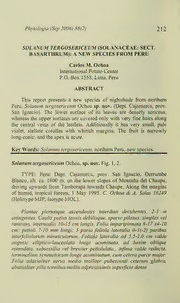
Solanum tergosericeum (Solanaceae: sect. Basarthrum): a new species from Peru

Arrow Board Operation and Maintenance Manual

The crime scene : a visual guide
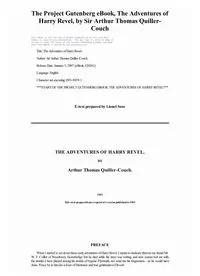
The Adventures of Harry Revel by Sir Arthur Thomas QuillerCouch

Taste of Home September/October 2018
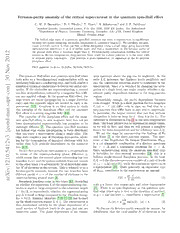
Fermion-parity anomaly of the critical supercurrent in the quantum spin-Hall effect

CRS 5: Labelling of Pre-packaged Foods
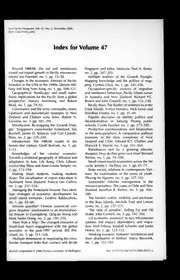
Asia Pacific Viewpoint 2006: Vol 47 Index

CA New Accountability System - California Accountability & School Dashboard
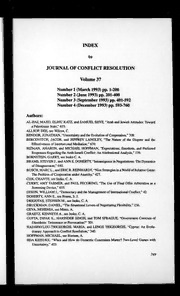
The Journal of Conflict Resolution 1993: Vol 37 Index

Long Way Down

Zandvoortse Courant 2006 week 01

Friuli nel Mondo 618-03-2006

Elements of Physical Chemistry, 5th Edition

The Young Alaskans in the Rockies by Emerson Hough

The Young Adventurer by Horatio Alger Jr
